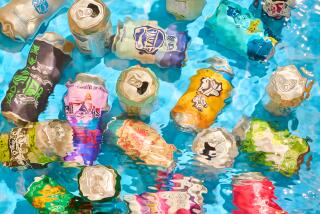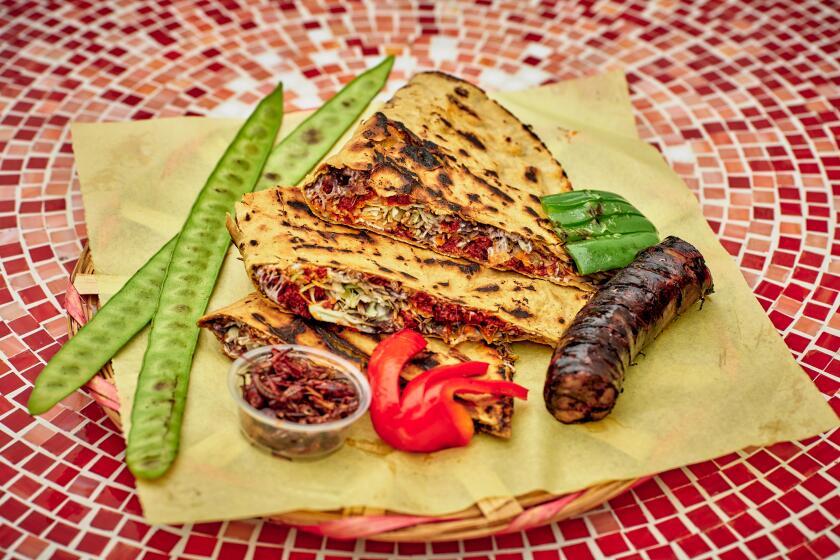Rupert Murdoch owns a lot of things, including this vineyard in Bel-Air
Rupert Murdoch missed harvest this year at his home, Moraga Estate, the remarkable and anomalous vineyard planted among some of the priciest homes of Bel-Air. The billionaire media mogul says he fully intended to hit the vine rows with shears and bins, roll up his pant legs and tread some red grapes, or operate the press, a button-pushing operation perhaps not dissimilar to other presses he’s operated in his career. But harvest came early in 2016, the earliest ever at this swooping, vertiginous, tightly packed jumble of vines across the street from the Getty Museum (and by street, I mean the 405). These are the vines you wonder about as you ascend to the Getty in the tram and wonder, “Who in their right mind would grow grapes in Bel-Air?” Anyway, since the departure of Roger Ailes, Rupert Murdoch has taken on a day job, which has been fairly all-consuming lately.
This is the third vintage Murdoch has missed since perusing the Mansion real estate section of his newspaper, the Wall Street Journal, and coming across a listing for Bel-Air’s only working winery.
For the record:
3:12 p.m. Nov. 8, 2024This article says that Moraga Estate became in 1989 the first bonded winery established in Los Angeles since Prohibition. Other wineries had been established in Los Angeles since the repeal of Prohibition in 1933 and before Moraga Estate was founded.
“I had heard of it,” Murdoch says, “and remembered meeting its founder and owner, Tom Jones, once with Ronald Reagan.” He had long conversations with Jones — who ran the Northrop Corp. for nearly three decades — about the property, about keeping up the vineyard tradition, and eventually toured the “modest” 7,500-square-foot home at the base of the hill. But it was the vineyard that floored him. “It was simply stunning,” he says. “The winery and vineyard, and the wine were a great bonus. I very quickly fell in love.”
This is a property once owned by Victor Fleming, director of “The Wizard of Oz” and “Gone with the Wind,” who built a home here in the same year that both films were produced, 1939. Fleming kept horses and boarded a few, including those of his friend Clark Gable. In 1959, Thomas V. Jones and his wife, Ruth, purchased the property. Jones spent many years staring at the gorse-choked hillsides that rose steeply up from the house before setting down vines in 1978.
Moraga Estate’s first vintage came a decade later, in 1989, becoming, at the time, the first bonded winery established in Los Angeles since Prohibition. Currently the property is planted to 6.3 acres, contributing to an Estate Red and an Estate White, both inspired by Bordeaux and, to a lesser extent, Napa. Jones was an engineer, soft-spoken and exacting. He teased out a highly meticulous style, one based, says his longtime winemaker Scott Rich, on elegance.
“It was his engineering background,” says Rich, “everything we do is simple.”
Jones died one year after Murdoch purchased the property, but his systems, and the house style, remain largely intact.
The white wine, 100% Sauvignon Blanc, is made with a nod to Graves in Bordeaux, though the oak treatment is much subtler — just 20% of the wine sees any oak. It is citrusy and suave, with a freshness that will make you think you can taste the tang of ocean air. The red wine, a Cabernet and Merlot dominant blend, is more stalwart, its dark fruited core lifted by a cedary, pine-needle spice. Rich aims for the wines to be “skinny,” focused and elegant rather than plush, and in this sense they diverge from Napa altogether. Both wines, not surprisingly, are very long-lived, and it is not unusual to see vintages on local restaurant wine lists going back into the ’90s.
When you taste these wines, it is hard to keep in mind that they’re grown in Bel-Air, and that any wine of any quality should originate there — that is, until you actually visit. (Which most people cannot, as Moraga vineyard is not open to the public.) The vineyard rises with harrowing steepness on hills composed of gravels and calcareous ocean deposits — fossils of sea creatures regularly turn up in the dirt. The weather patterns, however, make a lasting impression even here, in a town famously devoid of them.
On the August morning I drove to the vineyard, I exited the 405 into a dissipating fog: The first hint of the day’s radial activity was revealing itself. Each day this narrow, west-facing canyon serves almost like a catcher’s mitt for ocean-air currents off the Santa Monica Bay; fog nestles into this notch in the hills every evening, and each morning it recedes.
Three hours later, with clockwork precision, a steady westerly breeze starts to blow, cooling the hillsides. This daily respiratory activity works wonders for preserving acidity in the Sauvignon Blanc and for tempering the onset of ripeness in red grapes. “We’re actually much cooler here than most of Malibu’s vineyards,” says Rich, “though those are often closer to the ocean.” In a typical vintage, Rich harvests his Merlot in the third week of September; the Cabernet usually hangs on the vine until the middle of October.
With a similar meticulousness, Tom Jones steered the wines into local restaurants and retailers: Both Steve Wallace of Wally’s and Piero Selvaggio of Valentino restaurant were steadfast supporters. Over the years the wines have achieved a kind of uneventful notoriety, known as much for their quirky provenance as their unexpectedly high quality. Murdoch’s intention, at least for now, is to keep everything as it is, a little vinous oasis set against the tide of urban sprawl.
The Moraga Red and the Moraga White are available in multiple vintages at Wally’s, the Wine House, the Old and Rare Wine Company, John and Pete’s, and many area restaurants. They do not come cheaply, and Murdoch, believing the wines to be world class, has priced for the current vintages accordingly: about $175 for the 2012 red, about $110 for the 2014 white.
More to Read
Eat your way across L.A.
Get our weekly Tasting Notes newsletter for reviews, news and more.
You may occasionally receive promotional content from the Los Angeles Times.










